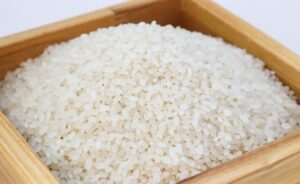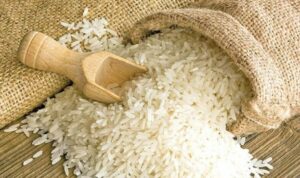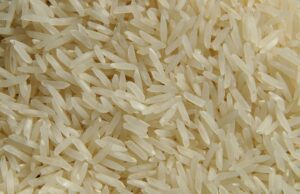
The U.S. Department of Agriculture in its September review lowered its estimate of India’s rice exports next year to 17.5 million tons from 19 million tons in the August forecast. This year, exports are expected to reach 20 million tons.
World rice prices have soared to 15-year highs amid export restrictions imposed by India, the world’s largest rice exporter, the USDA said. In July, the country imposed a ban on the export of most rice varieties, followed by an export duty on steamed rice and a minimum export price for basmati. Importers switched to other major suppliers, such as Thailand and Vietnam, and as a result, their export prices rose to the highest levels since 2008.
At the same time, even before India’s restrictions, rice prices were rising amid strong demand from importers and declining production in a number of countries.
In 2008, India, at that time the second largest exporter of rice, also imposed export restrictions, which led to a sharp rise in prices. After the restrictions were lifted in 2011, the country increased supplies to the global market and became the largest exporter the following year, and has maintained this position since then. In 2022, India exported slightly more than the next four suppliers combined, accounting for about 40% of global supplies. Since 2020, the country has been supplying white rice at the lowest prices, especially to sub-Saharan Africa. The sharp rise in prices is expected to have a significant impact on these import-dependent countries.
Despite the significant increase in export prices, they have not reached the record levels of 2008, as export restrictions are less severe this time. In addition, Vietnam, which stopped exports in 2008, is now resuming shipments.
According to the USDA forecast, global rice exports this year will amount to 53.11 million tons (56.12 million tons last year). Next year, supplies may decline to 52.1 million tons (the forecast was lowered from 53 million tons, according to the August estimate).

Rice production in Ukraine in 2022 due to a full-scale war decreased 16 times compared to the previous year and amounted to only 3.1 thousand tons, while in the season-2023 this figure may increase by 3.5 times – up to 11 thousand tons, reported the Ukrainian Club of Agrarian Business (UCAB).
Its analysts recall that before the war, Odessa and Kherson regions were engaged in rice cultivation due to natural and climatic conditions.
“Due to the Russian attack, part of the territory of Kherson region was occupied, accordingly, Ukraine lost the opportunity to grow rice on these lands as early as last year. It should be noted that the production of this crop was mainly engaged in the left-bank part of the region, which is still under temporary occupation. Therefore, for a year and a half we have no possibility to get rice from this part of Ukraine,” the experts noted, adding that after the Kakhovskaya HPP dam was blown up, the chance of revival of rice farming in this region is extremely low.
According to their information, now only Odessa region is engaged in rice farming, which in 2022 grew about 3.1 thousand tons. Experts explained such small volumes by the uncertainty at the beginning of the war and reorientation to higher priority crops. As forecasted in UCAB, that in 2023 the situation in the region will slightly improve and the own production of rice will reach about 11 thousand tons.
Analysts also emphasized that Ukraine has always imported more rice than it grows, as there are countries where natural and climatic conditions are more favorable for growing this crop. However, the ability to provide itself with the necessary foodstuffs, guaranteeing its own food security, is also important.
Despite the war and the destruction of traditional logistical routes, the volume of rice imports remains at a relatively stable level, assures the UCAB.
According to its data, Ukraine imported 87.6 thousand tons of rice in 2022, which is 5% more than in 2021. The main supplier countries were China, India and Pakistan.
“In 2023, imports are expected at 73 thousand tons – 17% lower than in 2022. The reduction in imports is due to the increase in world rice prices and the low solvency of Ukrainians,” the UCAB summarized.

The U.S. Department of Agriculture has lowered its forecast for global rice production in 2022-2023 due to deteriorating crop prospects in China and a number of other leading medium-grain rice-producing countries.
Global rice production is expected to be 502.97 million tons, lower than the December forecast (503.27 million tons) and previous years’ results (514.95 million tons in the 2021-2022 season), the agency said in a review.
Significant production declines in the 2022-2023 marketing year are expected in major medium-grain rice producing and exporting countries, including the United States, Australia, and the European Union.
In the U.S., due to drought weather in California, production of medium- and short-grain rice could drop 31% from the 2021-2022 crop year and be at a record low since the 1972-1973 season, the nation’s Agriculture Department forecasts. Rice prices on the domestic market have jumped 50% from last season’s level. Export prices are also on the rise, which could result in exports being the lowest on record since 1998-1999. Historically, the largest export markets for U.S. rice have been Japan and South Korea. They remain key markets as required under the WTO, but limited volumes have been tendered in recent tenders due to declining interest from suppliers, given reduced supply and rising U.S. prices.
The country’s rice production forecast was lowered to 5.09 million tons from the December estimate of 5.22 million tons, exports to 2.15 million tons from 2.25 million tons.
In the EU in the season 2022-2023 is expected to fall by 25% rice production, the figure may be the lowest since the season 1984-1985. The main producers of rice in the EU (80% of the volume) are Spain and Italy, and both countries have faced severe drought and lack of water for crops. Rice production in the EU is expected to be 1.29 million tons compared to 1.72 million tons last season, exports will decrease slightly (to 400 thousand tons from 440 thousand tons). At the same time, imports of rice to the EU may turn out to be a record, amounting to 2.7 million tons. Historically, long-grain rice has historically accounted for the bulk of supplies, but in recent years the share of medium-grain rice imports has been growing.
China, which is the world’s largest producer of medium-grain rice, could cut production to 145.95 million tons in the 2022-2023 crop year (the previous estimate was 147 million tons from 148.99 million tons last season. Despite some decrease in harvest, prices are likely to remain competitive in the world market, given the impressive stocks. The forecast for Chinese rice exports for the 2022-2023 season is 2.2 million tons (estimate unchanged). The main importers of Chinese rice are Asian and African countries.
The world’s largest rice exporter, India, could deliver 20.5 million tons to world markets this season, the forecast was raised from the December estimate of 20 million tons). Also, the U.S. Department of Agriculture raised its forecast for India’s rice production by 1 million tons to 125 million tons.
Rice export estimates from Thailand and Vietnam remained unchanged at 8.5 million tons and 7.4 million tons, respectively.
The forecast for global rice exports in 2022-2023 was raised to 54.38 million tons from 53.76 million tons.